My Journey as a Wheelchair Actress by Madeline Delp
In the first blog, you read about my story of receiving a lead role in a feature film and having to pack up my life and move to LA only three weeks later. Here is the good and the bad of what happened on-set after my months of intense training for the role. (Along with tips to help you avoid the mistakes I did and succeed in your dream career!)
STEP #1 – BE PROACTIVE
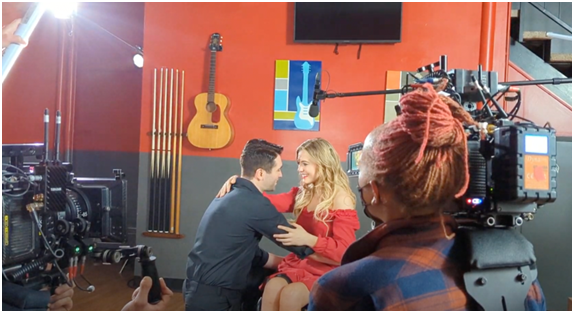


Even with the pain, our first day of filming felt like an absolute dream: the bustle of the crew, the energy of being with my co-stars, and the pride of being the lead actress in a feature film. Twelve hours of hard work seemed to quickly come and go, and I was still ready for more. It wasn’t until a week on-set had passed that I began to see the toll it was taking on my body. During my normal schedule, I usually balanced my time in and out of the wheelchair, but on-set I was sitting in the wheelchair for most of the day.
This caused my first problem: a pressure sore on my butt. (Anyone with a spinal cord injury knows how serious these guys can get!) A series of other problems began to snowball from there: increased back and rib pain from the long workdays, spasms in my legs and bladder because of the pain, breaking my toe after falling out of my chair because of one of these leg spasms, and the pièce de résistance, briefly passing out on our biggest film day due to all the stress my body was under.
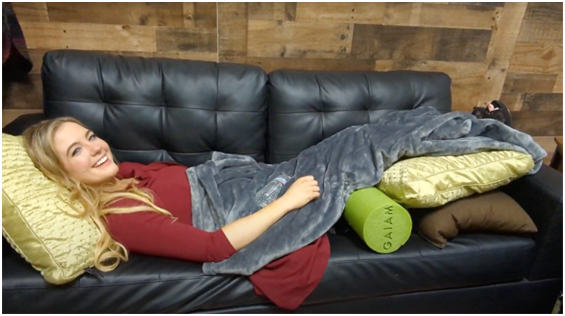


As I woke up on the couch after my fainting spell with a sea of concerned eyes surrounding me, I realized that it was time for a change.
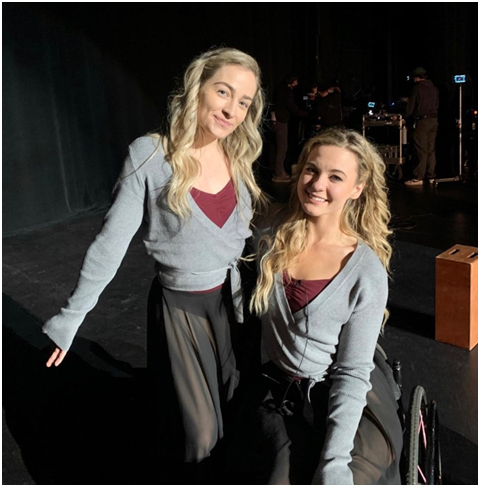


The first thing the production team did was order a pause in filming so I could have recovery time and so we could create a new plan of action. While my knee-jerk reaction was to say that I was completely fine to keep filming, I knew I had to maximize this opportunity and figure out what my needs really were. First, I asked for breaks in between each scene in order to lay down and stretch with my on-set nurse so that my pain decreased and my legs weren’t so spastic. Second, I requested a restructured shooting schedule that made it physically easier on my body and bladder. And third, I asked for shorter shoot days after realizing that my body was struggling to maintain energy for 12-14 hours.
It is much harder to change the rules of the game AFTER the game has already begun, and this is why proactivity is the first step someone can take to truly succeed in their career. Had I taken the time with my team to ask more specific questions about our filming schedule and really thought about how my body would react under these conditions, I could have prevented many, if not all, of my on-set disasters. It is usually a hard pill to swallow to take ownership of the things you could have done differently in a work situation gone wrong, but the most important thing you can do is learn from your mistakes and quickly move on from them stronger and wiser.
Proactivity To-Do List:
- RESEARCH: Identify as much information as possible regarding what your job will entail: first, by asking your new employer thorough questions about their expectations, and second, by doing extensive research on actions that will help you succeed in your new role.
- COMMUNICATION: Have an open and transparent conversation about your personal needs on the job with very specific solutions. The key is not to present problems but rather to share a situaon with an easily attainable resolution.
- TRAINING: Work to prepare yourself physically and mentally by exercising, stretching, getting enough sleep, and visualizing yourself completing all the steps it will take to succeed at the job.
- PREPARATION: Create a daily bag of items that will help you to perform your best for your day at work. This will be different for each person, but the items should help to maximize your health (water, vitamins, healthy snacks, pain reliever, Attends pads), maximize your productivity (planner, strategy notes for your day’s tasks), and minimize stress (meditation videos, tea, yoga mat for stretching). Don’t be afraid to get creative!
STEP #2 – NETWORK, NETWORK, NETWORK
After I put in my request to the production team about my needs moving forward during filming, I decided to use my recovery time to work my proactivity muscle even further and make some helpful connections. As a girl coming from a small town in North Carolina, I was accustomed to only having access to a small pool of resources when it came to people in the acting world – especially people in the acting world who had a disability. It hit me that I now lived in Los Angeles, the mecca of individuals in the industry who came in all shapes and sizes! I also realized that I had been making excuses when I was in North Carolina regarding having access to resources: no matter where you live, eperts in any field are just an email or a Zoom call away
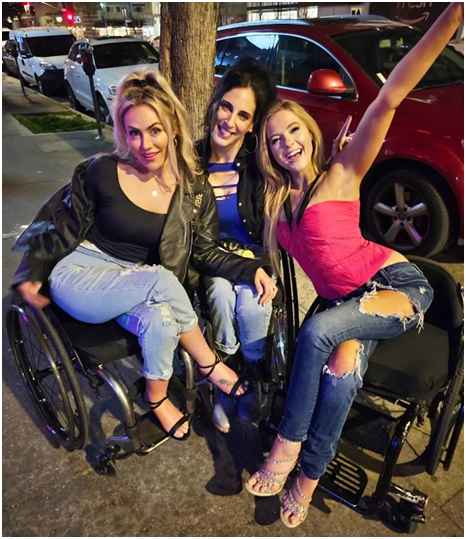


My first move was to connect with several women in wheelchairs who had all been in the acting world for many years. After several in-person lunches and confession sessions about my challenges on-set, I was able to get a ton of helpful advice on how to professionally communicate my needs and boundaries on-set. Even further, I was able to get incredible tips on how to succeed as a female with a disability in this extremely competitive world. My second move included connecting with an organization that empowered people with disabilities to better advocate for themselves in the film industry. They were able to help me design a new schedule with the production team that met my updated requirements, while also giving me strategies on how to package my disability as an asset when auditioning for future projects!
With almost any career goal you have, there are thousands of people who have gone before you and faced the same thing or something similar. We often tend to reinvent the wheel and push forward with our career challenges without consulting others for help, but you can save yourself from making a boatload of mistakes by simply making connections! If I had made the connections that I mentioned above BEFORE filming began, I would have known what to ask for upon receiving the role and would have approached the hiring process in an entirely different way.
Networking To-Do List:
- MENTORS: Find someone who has succeeded in the same career path you are pursuing, preferably under similar conditions. Schedule regular times to call or meet-up with them so that you can stay accountable with your progress! (Try to find a way you can be a benefit to them too in order to thank them for their time.)
- EMAILS: Pick a day once a week/month to research people in your field who could be positive connections and reach out to them. By increasing the amount of people you speak to in your industry, you improve your reputation and access to opportunities in the field.
- ORGANIZATIONS: Research organizations that help people in your specific career path, especially if you are in a minority. They will usually have a large amount of education resources, contacts, and training classes, along with strategies that can help you change the industry itself to become more inclusive!
- CONFERENCES: Find the conferences in your field and attend them – this is the easiest way to connect with the most contacts possible at once. Make sure to follow up with the people you meet within 48 hours. (Bonus points if you take a photo with them and include it in the email so they remember you!)
STEP #3 – BUILD A SPECIFIC SKILLSET
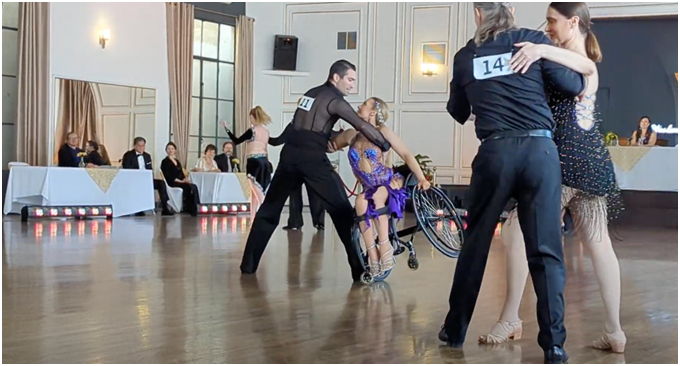


Taking on a lead role in a movie was an ironically humbling experience. Even though I did my best to inject passion and authenticity into each scene, I became strongly aware of all there is that I still have left to learn – not just in becoming my own advocate as someone with a disability, but also in building my craft as a disability actor. Many people feel like their differences can present as a “weakness” to those who are hiring, but the truth is, those differences can be the ultimate differentiation that makes you stand out in a positive way.
Although I had been studying the art of acting for quite a while, I realized that my focus had been solely on classes that were teaching general techniques to a general audience. While they have certainly helped me to build my base skillset, they were not able to help me get hyper-focused on my specific needs as a wheelchair actor. For years I had been trying to get noticed regardless of my disability, but I began to see that my unique ability could actually be highlighted and packaged in a way that was advantageous to my career. If I worked with experts who understood the industry and saw the need or “gap” in the market, I could brand myself as a strong actor who specialized in exactly what casting directors were looking for.
Anyone can say that they are a strong choice to hire because they are talented in a general field. This, however, will not make them stand out to employers or shine in the industry in a significant way. Find what makes you special and embrace it with everything you have!
Skillset To-Do List:
- GENERAL: Make sure that you first have a strong education/knowledge of the base skills required for your career. You will begin to adapt all of these techniques while building your unique specialty.
- SPECIALTY: Find your differentiation point and what makes you beautifully unique in your industry. Work with an expert to determine the underserved areas of the market that you can fill by effectively using your special strengths to make a huge impact. (Make sure it is something you are passionate about!)
- BRANDING: Work to create clear branding around yourself and what you have to offer. Create your own personal mission statement, goals, and value proposition (the distinct benefits of hiring you). Align all your career activities within your branding in order to make your specialty as clear and focused as possible.
- PUBLICITY: Position yourself as a true expert in your field by leaving a body of proof: write articles, complete media/podcast interviews, find speaking engagements, etc. This will build your brand and resume and create the kind of profile that will get you hired for your dream job!
You can create a fantastic career that fulfills you every day and positively gives back to the world around you, regardless of your disability or physical challenge. The first and hardest step is simply making the decision to replace a passive, victim mindset with a proactive, champion mindset. Don’t be afraid to communicate your needs, make new connections, and package the beautiful skills you have to offer in a powerful way!
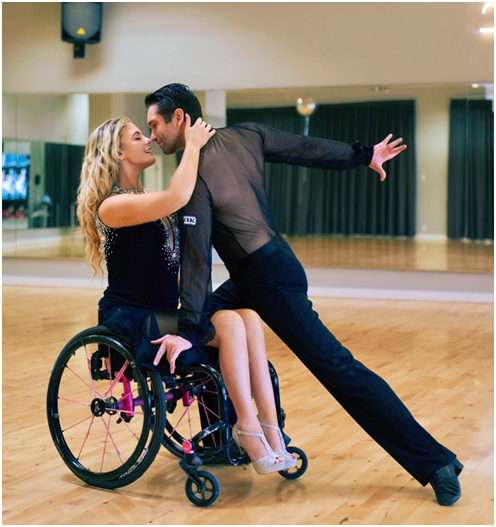


I am excited to share my upcoming movie, Ballroom, with all of you in 2024 and can’t wait for you to watch the beautiful story of overcoming that it tells. You will get to see Violet’s journey of overcoming barriers in the movie, but you will also know my personal story of overcoming fear, pain (and accidents) behind-the-scenes!
Attends is here for you on your journey: their innovative, absorbent products can help you go out into the world and chase your dream career without stressing about incontinence!








